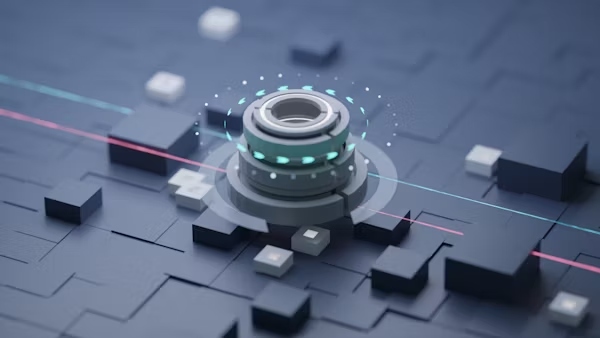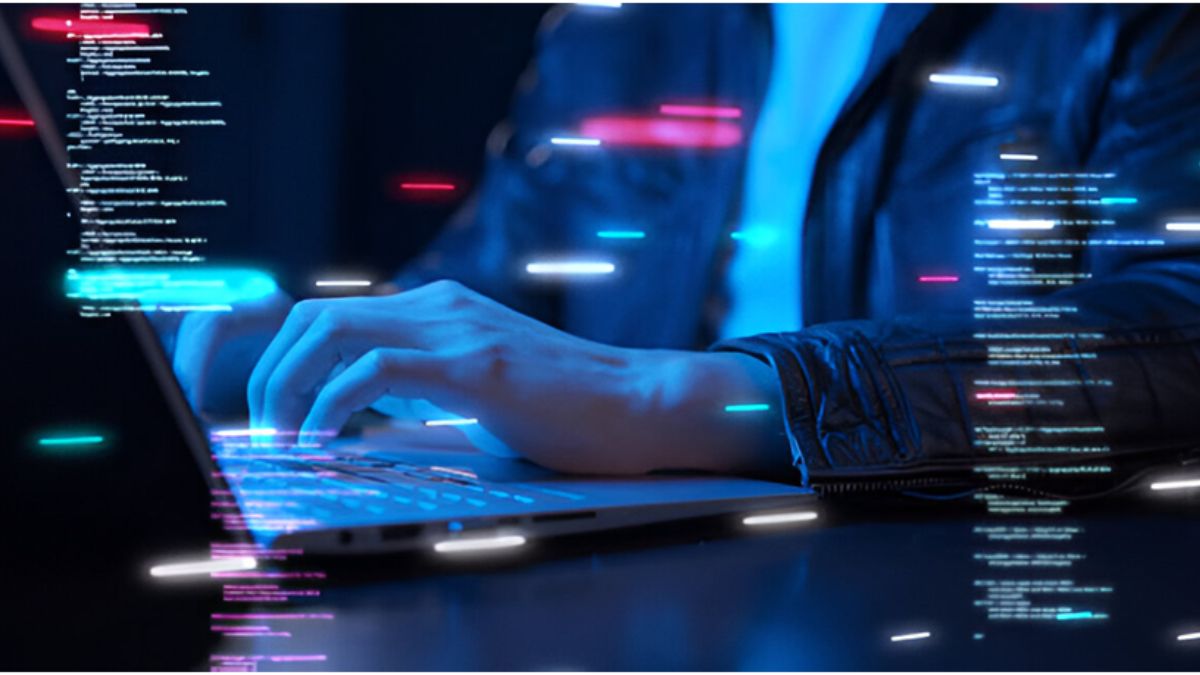TECH
Training Protocols: How Pilots Are Educated on Remove Before Flight Tags

Aviation is built on precision, and even the smallest details can have significant consequences. Among the many safety elements used in aviation, few are as iconic and critical as the bright red “Remove Before Flight” tag. These tags are not just visual reminders—they are life-saving indicators used to prevent accidents on the ground and in the air.
But have you ever wondered how pilots are trained to recognize, understand, and act on these tags? From ground school to flight simulations, this article dives into the structured training protocols that ensure every pilot knows exactly what to do when they see a “Remove Before Flight” tag.
The Purpose of Remove Before Flight Tags
Before exploring training practices, it’s important to understand the role these tags play. “Remove Before Flight” tags are attached to protective components, such as:
- Pitot tube covers
- Engine intake plugs
- Landing gear pins
- Ejection seat safety locks
These components must be removed before the aircraft becomes airborne. If left in place, they could lead to system malfunctions, incorrect instrument readings, or catastrophic mechanical failure.
Pilot Ground School: The Foundation of Safety Awareness
Every certified pilot starts with ground school—this is where theoretical knowledge forms the base for future hands-on learning. During these lessons, students are introduced to safety protocols, checklists, and standard operating procedures (SOPs), including:
- Identification and purpose of “Remove Before Flight” tags
- Common aircraft components they are attached to
- Visual inspection techniques
Instructors emphasize that overlooking a single tag could compromise flight safety. Pilots are taught to treat these tags as a mandatory part of the preflight inspection.
Integration into Checklists and Preflight Procedures
As pilots transition from the classroom to the cockpit, checklist discipline becomes second nature. Every certified aircraft has a standardized preflight checklist, which includes steps to verify that all safety devices and covers marked with a “Remove Before Flight” tag have been removed.
Flight instructors stress the importance of physically checking for the tags, not just relying on ground crew. Even for airline pilots flying commercial jets, cross-verifying tag removal is a critical task shared with co-pilots and maintenance teams.
Simulation-Based Training: Practicing Real-World Scenarios
Modern flight schools and airline training programs use advanced flight simulators to mimic real-world flying conditions. During these sessions, trainees may encounter simulated consequences of overlooked tags, such as:
- Pitot-static system failures due to a blocked pitot tube cover
- Takeoff roll aborts from gear pin obstructions
- System warnings triggered by incorrect configuration
These scenarios teach pilots the importance of redundancy, cross-checking, and situational awareness. It’s not just about spotting the tag; it’s about understanding what it protects and how its presence (or absence) affects the aircraft.
Mentorship and Shadowing: Learning from Experience
In commercial aviation, new pilots typically start as first officers under the guidance of experienced captains. During this phase, observation and mentorship play a significant role in reinforcing best practices, including tag awareness.
Captains often share personal anecdotes or lessons learned from previous oversights, emphasizing that even seasoned professionals must remain vigilant. Real-world exposure is invaluable for recognizing human factors such as fatigue or complacency that can cause lapses in safety checks.
In many training environments, visual reinforcement tools such as custom tags are used to simulate real conditions. Aviation schools and training programs often invest in high-quality, personalized “Remove Before Flight” tags for student exercises. Companies like 4inlanyards offer custom flight tags that replicate real-world tags with professional-grade quality, giving students an authentic training experience. These tags can be personalized to include aircraft tail numbers, training facility logos, or specific maintenance instructions—adding another layer of realism to the training environment.
Military and Advanced Aviation Training
In military aviation, the protocols surrounding “Remove Before Flight” tags are even more rigorous. Since many military aircraft contain ejection seats, weapons systems, and complex avionics, the tags play a more critical role than ever.
Military pilots undergo repeated drills to identify and confirm the removal of safety tags. In many cases, a second or third pair of eyes must sign off before the aircraft is cleared for takeoff. This culture of redundancy ensures that mistakes are caught before they can impact a mission.
Recurrent Training: Keeping Skills Sharp
Pilot training doesn’t end with certification. All commercial and military pilots are required to undergo recurrent training, often every 6 to 12 months. These refreshers revisit key safety practices, including the role of “Remove Before Flight” tags.
Pilots are tested on both knowledge and practical skills to ensure continued competency. Aviation authorities like the FAA and EASA require that preflight inspections be performed with the same attention to detail throughout a pilot’s entire career.
Conclusion
Remove Before Flight tags may be small, but their significance in aviation safety is enormous. Through comprehensive training protocols—from ground school theory to simulator practice and in-flight mentoring—pilots learn to treat these tags with the gravity they deserve.
The aviation industry’s meticulous approach ensures that every pilot, regardless of experience level, understands the life-saving importance of tag removal. By embedding this knowledge into every stage of pilot education, the sky remains a safer place for everyone on board.
TECH
Ovppyo: Emerging AI-Driven Automation Concept Explored

Introduction
The rapid evolution of artificial intelligence (AI) has fueled countless innovations across industries, reshaping how businesses and individuals interact with technology. Among these emerging ideas is Ovppyo, a concept that represents the next wave of AI-driven automation. While the term may sound abstract, Ovppyo embodies a powerful convergence of automation, intelligence, and adaptability. This article explores what Ovppyo signifies, its role in AI development, and the potential impact it can have on society, industries, and everyday life.
What Is Ovppyo?
Ovppyo can be understood as a framework for AI-powered automation that emphasizes three core elements:
-
Optimization – Streamlining tasks, processes, and decisions through advanced algorithms.
-
Predictive Intelligence – Using machine learning models to anticipate outcomes and suggest proactive actions.
-
Personalization – Adapting automation to individual users, businesses, and environments.
Unlike traditional automation, which follows rigid rule-based systems, Ovppyo introduces flexibility and learning ability, enabling technology to evolve alongside human needs.
The Philosophy Behind Ovppyo
The term “Ovppyo” suggests more than just a technical application. It reflects a shift in how society envisions automation: not as a rigid replacement for human work, but as a collaborative system designed to amplify human capability.
Core Philosophies:
-
Human-Centric Automation – AI adapts to people, not the other way around.
-
Sustainability – Smarter automation that reduces energy waste and optimizes resources.
-
Scalability – From small businesses to global enterprises, Ovppyo systems scale seamlessly.
Key Features of Ovppyo in AI-Driven Automation
-
Adaptive Learning
Ovppyo systems continuously refine themselves through feedback loops, unlike static automation that requires manual reprogramming. -
Cross-Industry Integration
Whether in manufacturing, healthcare, finance, or education, Ovppyo’s adaptable framework enables wide applicability. -
Ethical Intelligence
Emphasis on fairness, transparency, and responsible AI ensures that automation respects human rights and avoids biases. -
Real-Time Decision-Making
Ovppyo leverages AI to make split-second decisions, crucial in areas like autonomous driving, fraud detection, and logistics.
Applications of Ovppyo
1. Business Process Automation
Companies can deploy Ovppyo-driven tools to streamline repetitive tasks like data entry, reporting, or customer support.
2. Smart Manufacturing
Factories powered by Ovppyo concepts integrate IoT sensors with predictive analytics to reduce downtime and enhance efficiency.
3. Healthcare
Automation can assist doctors with diagnostics, scheduling, and patient care, while predictive intelligence identifies risks earlier.
4. Finance
Fraud detection, risk analysis, and portfolio management are enhanced by AI-driven automation under the Ovppyo framework.
5. Education
Personalized learning experiences adapt to student needs, making education more interactive and effective.
Benefits of Ovppyo
-
Efficiency – Reduced manual workload increases productivity.
-
Accuracy – Machine learning minimizes errors compared to rule-based automation.
-
Scalability – Businesses can grow without drastically expanding human labor.
-
Innovation – By freeing up time from repetitive tasks, humans can focus on creative and strategic work.
-
Cost-Effectiveness – Lower operational costs and reduced downtime drive profitability.
Challenges and Considerations
While promising, Ovppyo also introduces challenges:
-
Data Privacy – More automation means more data; safeguarding it is crucial.
-
Bias and Fairness – AI systems must be trained on diverse datasets to avoid discrimination.
-
Job Displacement – Though Ovppyo is human-centric, some roles may still be automated.
-
Complex Implementation – Deploying intelligent automation requires resources, expertise, and infrastructure.
The Future of Ovppyo
Looking ahead, Ovppyo may evolve into a standard model for intelligent automation, reshaping industries globally. Integration with emerging technologies like quantum computing, blockchain, and 6G networks could enhance its capabilities further.
We can expect Ovppyo to drive a world where:
-
Smart cities run efficiently with minimal human intervention.
-
Businesses operate on self-correcting, adaptive systems.
-
Individuals benefit from personalized AI assistants that manage daily routines seamlessly.
Conclusion
Ovppyo is more than a futuristic buzzword; it symbolizes a transformative leap in AI-driven automation. By combining adaptability, predictive intelligence, and personalization, it has the potential to redefine how industries function and how people engage with technology.
TECH
Technology is Driving Economic Diversification in the Middle East

Technology is Driving Economic Diversification in the Middle East
Middle Eastern nations have acknowledged that their traditional over-dependence on energy revenues is potentially detrimental to their economic wellbeing. There is a growing trend of nations around the world leaning towards cleaner energy. The Middle East must adapt or get left behind by other countries. Investing in multiple sectors gives the region a stronger buffer against global economic swings, and technology is a focal point of this calculated move. Read on as we assess how technology will help nations in the Middle East diversify their economies.
Kuwait’s Smart City Initiative: Powering Economic Diversification Through Technology
Kuwait’s Vision 2035 project is an initiative developed to tailor and keep track of its diversification plans.
It is an ambitious roadmap aimed at turning the country into a regional financial and cultural hub but also one that can ultimately spread its wings beyond the deserts. Creating smart cities is a key part of the initiative. These smart urban spaces rely on advanced technology to boost the quality of life and support sustainable development. The concept of smart cities is about using technology and data to solve real urban problems. The Kuwait Smart City Project focuses on using Information and Communication Technology (ICT) to manage everything from traffic to waste collection. The government gathers real-time data by placing sensors and Internet of Things (IoT) devices across city infrastructure to make more informed decisions that improve the quality of life for every citizen. The Kuwaiti government has already rolled out pilot programs to test smart technology. The Kuwait Municipality is actively working with technology companies to implement smart solutions. They are exploring partnerships with leading tech giants around the world to help with the development of platforms that streamline urban planning and resource management. These collaborations will lay the groundwork for a more diverse and resilient economy. It will bring expertise to the table and also foster innovation within the local market.
Technology Could Pave the Way for Legal Gambling in Kuwait
Kuwait usually takes a conservative stance when it comes to gambling. Even with other Middle Eastern nations releasing the brakes, Kuwait continues to lean towards the laws of the land. However, technology could pave the way for gambling to be licensed and regulated in Kuwait without completely obliterating its cultural values. Kuwait’s legal position is that gambling is outlawed. That has not stopped numerous foreign companies from opening real money online casinos in Kuwait in recent years. However, Kuwaiti policymakers could consider using technology to set up a strictly regulated online gambling infrastructure. It could be anchored in blockchain to ensure fair play and protect users. Investors who have been concerned about tapping into the Kuwaiti market could support the system. It would catch the eye of conservative stakeholders and, more importantly, take back the economic value of the sector from foreign operators and the black market. Betting platforms can use digital identity frameworks such as ‘Know Your Customer’ (KYC) to preserve the integrity of the sector. They could also use artificial intelligence (AI) to monitor bets, flag anomalies and generate alerts in real-time. It would also help to protect users from data breaches by cybercriminals.
How AI and Cloud Computing can Power the Middle East’s Gaming Boom
Gaming is one of many sectors that Gulf nations are pouring significant funds into in their bid to create multiple revenue streams and they are reaping the rewards. Generative AI is redefining the gaming experience by creating lifelike characters, storylines and virtual worlds that get gamers glued to their screens. Cloud computing ensures gamers do not need to spend a fortune on consoles or powerful PCs. They can play their favourite games anywhere with a stable internet connection. Gamers in the Middle East have welcomed this trend with open arms. With regional cloud infrastructure expanding, several nations are making strides to reduce latency and improve gaming performance.
Major players such as Amazon Web Services (AWS) and NVIDIA are looking to enter the Middle East market, which could be a game-changer for economies in the region.
TECH
What is a Darknet Hacker? Easy Guide to Understanding Them

What is the Darknet?
First of all, the darknet is a secret part of the internet. Unlike the websites you visit every day, the darknet is hidden from normal search engines like Google. Therefore, you cannot access it using a regular browser. Instead, special software is needed to get there, such as Tor. People use the darknet for different reasons. Some want to keep their identity private, while others want to share information safely. However, the darknet is also used for illegal things, like selling stolen items or breaking rules. Because of this, the darknet has a mysterious and sometimes scary reputation. Still, it is important to know that not everything on the darknet is bad. In fact, many people use it just to protect their privacy or share news without being watched. So, the darknet is a hidden part of the internet with both good and bad sides.
Who is a Darknet Hacker?
A darknet hackeris a person who uses computers to explore or break into secret places on the darknet. Usually, these hackers have special skills that help them find hidden information or access protected systems. Sometimes, darknet hackers do bad things, like stealing private data or causing trouble online. However, some hackers use their skills for good reasons. For example, they help companies find weak spots in their computer systems to keep them safe. So, a darknet hacker can be either a problem or a helper, depending on what they choose to do. Because the darknet is secret, these hackers work quietly, trying not to get caught. Overall, darknet hackers are people with special skills who explore the hidden parts of the internet for different reasons.
How Do Darknet Hackers Work?
First, they use special tools to hide who they really are. For example, they might use programs that change their location or hide their identity. This way, it is harder for others to find them. After that, hackers look for weaknesses in websites or computer systems on the darknet. They try to enter these systems without permission. Usually, hackers work quietly and carefully so no one notices their actions. Because the darknet is made for privacy, it is easier for hackers to hide there than on the regular internet. However, many hackers are very careful because law officers watch for illegal activities. So, darknet hackers use clever methods to stay secret while they work online.
Why Do People Use Darknet Hackers?
After understanding how darknet hackers work, the next question is why some people want to use them. Many companies or people hire darknet hackers to help protect their information. For example, they ask hackers to find weak spots in their computer systems before bad hackers can attack. This is called ethical hacking. On the other hand, some people hire darknet hackers for wrong reasons, like spying on others or stealing secrets. Sadly, this can cause big problems for the victims. Still, not everyone who uses darknet hackers has bad intentions. In fact, some people just want to recover lost data or fix their security. So, the reasons to hire a darknet hacker can be both good and bad. It all depends on the goal of the person who hires them.
Risks of Using a Darknet Hacker
Also, it is very important to know the risks of using a darknet hacker. First, if a hacker is caught doing something illegal, they can be punished by law. This means jail time or fines. Furthermore, when you hire a darknet hacker, you may not always know what they will do with your information. Sometimes, hackers might steal your data or use it in a bad way. This can cause a lot of trouble and even harm your reputation. Because of these dangers, many experts say it is risky to trust hackers from the darknet. Therefore, it is better to be very careful before hiring anyone online. Always think about the risks and make sure you choose the right people for help.
How to Stay Safe from Darknet Hackers
Furthermore, staying safe from darknet hackers is very important for everyone. First of all, use strong passwords that are hard to guess. Also, change your passwords regularly to keep them safe. Secondly, never share your personal information like passwords or bank details online unless you trust the website. In addition, keep your computer and phone software up to date. This helps fix security problems that hackers might use to get inside. Moreover, be careful when clicking on links or downloading files from unknown sources because they might contain viruses. Finally, if something seems strange or suspicious online, it is better to avoid it. By following these simple steps, you can protect yourself from darknet hackers trying to steal your information.
The Future of Darknet Hacking
Finally, the future of darknet hacking is not clear, but we can expect some changes. As technology improves, hackers will have better tools to hide and work secretly. At the same time, security experts will create stronger defenses to stop bad hackers. Governments and companies are already working hard to catch criminals using the darknet. Sometimes, they even work with good hackers to find and stop illegal activities. Therefore, the fight between hackers and security will continue. Even though it is hard to predict exactly what will happen, one thing is sure: staying safe online will always be very important for everyone.
Final Words
Darknet hackers are part of the secret world on the internet. Some use their skills for harm, while others use them to help protect us. Knowing what the darknet is and who hackers are can help us understand the dangers and benefits. It is important to stay safe online by being careful with our information. Remember, not everything on the internet is safe or honest. So, always protect yourself and think twice before trusting anyone on the darknet. By doing this, you can enjoy the internet safely and avoid many problems caused by hackers.
-

 BLOG9 months ago
BLOG9 months agoSlothokiturbo.net: Exploring the World of Online Gaming and Community
-

 BLOG6 months ago
BLOG6 months agoLiteroticatags: Exploring the World of Erotica and Its Online Community
-

 BLOG11 months ago
BLOG11 months agoErothtos: Understanding Its Role in Today’s World 2025
-

 BLOG10 months ago
BLOG10 months agoUse 1.5f8-p1uzt – A Comprehensive Guide!
-

 BLOG11 months ago
BLOG11 months agoWatchmenontheall Calvin: An Exploration of Themes, Characters, and Significance
-

 BLOG11 months ago
BLOG11 months agoLeah Gettens: Everything You Need To Know
-

 TECH11 months ago
TECH11 months agoMansrufer: Pioneering Progress in Technology
-

 BLOG6 months ago
BLOG6 months agoJonathonSpire: We Learn About Her Career
